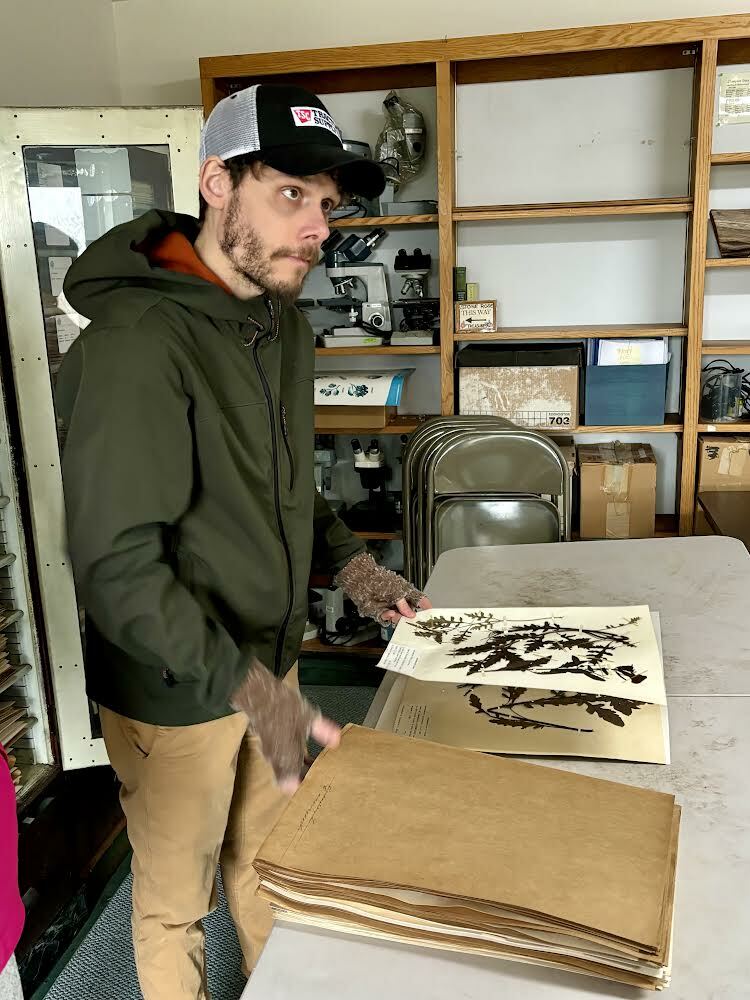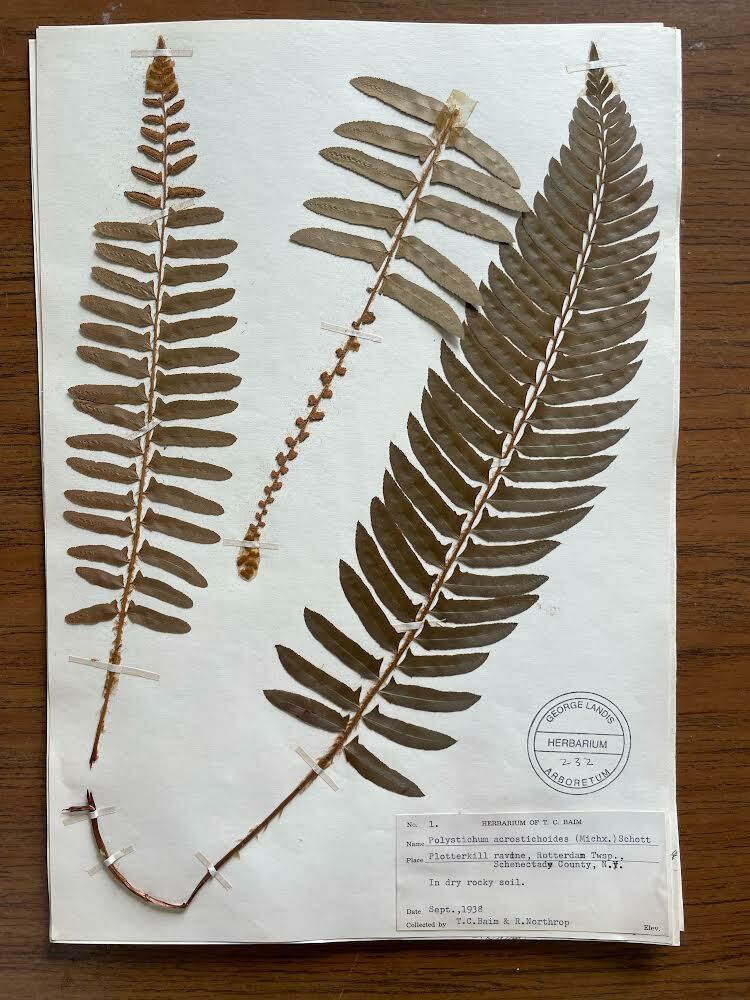For some people, the very word “herbarium” might conjure up images of medieval monks chanting in cloisters. Indeed,herbaria have functioned as a unique and valuable learning tool for over six centuries: the oldest extant herbarium has been operating in Rome for more than 500 years.
Quite simply, an herbarium is a library of dried plant specimens.
Ted Baim, an amateur botanist from Niskayuna, donated his herbarium of nearly 5000 specimens to the Landis Arboretum in 1990. Baim gathered many of his specimens from Schenectady County, and his local collection is regarded as comprehensive, but there are also many specimens from the Philippines and New Guinea; Maine, Louisiana, and Florida; as well as New York State, notably the High Peaks of the Adirondacks. Baim began collecting in 1938 and continued throughout his years in the military and his 24 years as an engineer at General Electric Research and Development. Baim also served on the Landis Board of Trustees for a time, and his herbarium was housed in the Raymond Library at the Arboretum.
Fred Breglia, the Arboretum’s executive director, advocated for the transfer of the Baim Herbarium to the New York State Museum in Albany, where it would be accessible to a greater number of plant enthusiasts and scholars. That recommendation was approved by a unanimous vote of the Board of Trustees.
While a room filled with dead plants might not seem exactly like cutting edge science these days, herbaria are still a critical source of information about such issues as climate change, evolution, and biodiversity.
NYS Museum scientists, Diana Murphy, Collections Manager of Botany and Mycology, and Dr. James Lendemer, Curator of Botany at the NYS Museum, are directing the relocation of the Baim Herbarium to the Museum. Dr. Lendemer said that herbaria are both a “snapshot in time”, a time capsule of sorts, and, equally important, a means to understanding change over time. Further, he pointed out that there is something “inherently human and tangible” about the process in which a person collects a particular plant at a particular time in a particular place. There is an artistic element, too, he added, noting that many of Baim’s specimens are carefully arranged on the page, and several sheets are accompanied by Baim’s own detailed botanical drawings.
The New York State Museum, which houses several hundred thousand specimens of plant material, recognized the importance of the Baim Herbarium and plans to transfer the collection to a climate controlled and secure environment. The Museum also plans to digitize its holdings and transcribe them into the Museum database, where they will be accessible to both the scientific community and the general public. (See nysm.nysed.gov >biology > collections.)
Fred pointed out that the Museum already has a large collection of mosses preserved by Baim. Diana Murphy noted that the Museum has exhibited several of Baim’s botanical drawings in the past.
Landis members are no doubt familiar with the meaning of “arboretum” - a library of trees, so to speak. Understanding the meaning of another Latin term, “herbarium,” and the decision to relocate the Baim Herbarium to the safekeeping of the State Museum demonstrates their Arboretum’s continuing commitment to the stewardship of its resources.
For a fascinating and beautifully illustrated volume on herbaria see Barbara Thiers, Herbarium: The Quest to Preserve & Classify the World’s Plants (Portland, Oregon: Timber Press, 2020).
The great American poet Emily Dickinson compiled an herbarium while she was a student at Amherst Academy (ca. 1839-1846). A facsimile was published by Belknap Press at Harvard University Press in 2006. It is available digitally; see library.harvard.edu.


